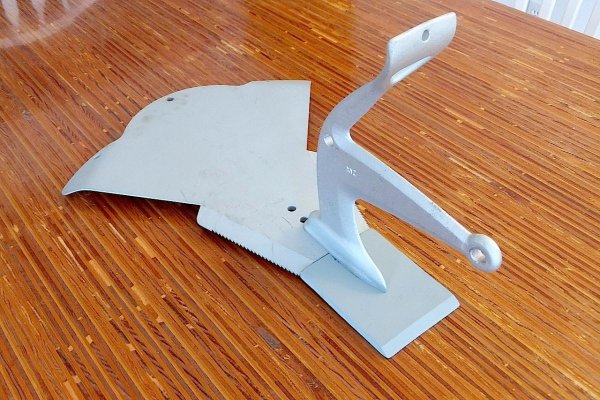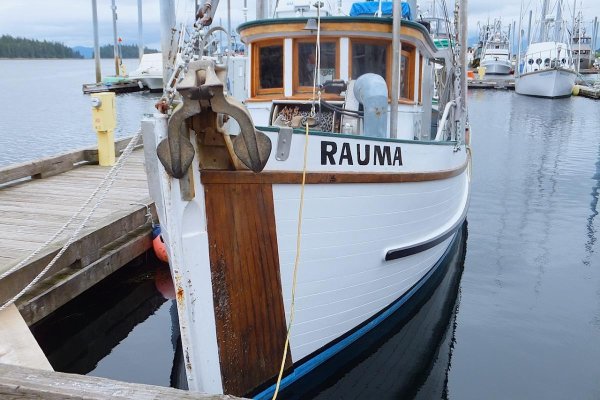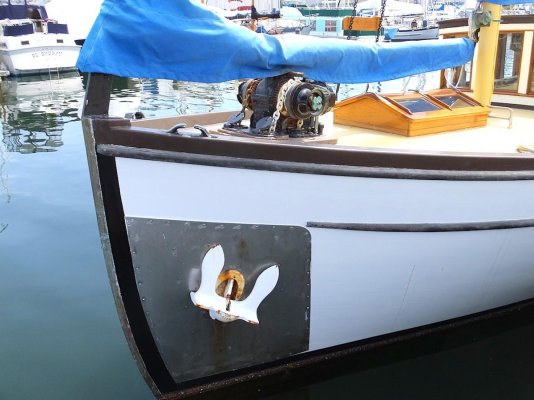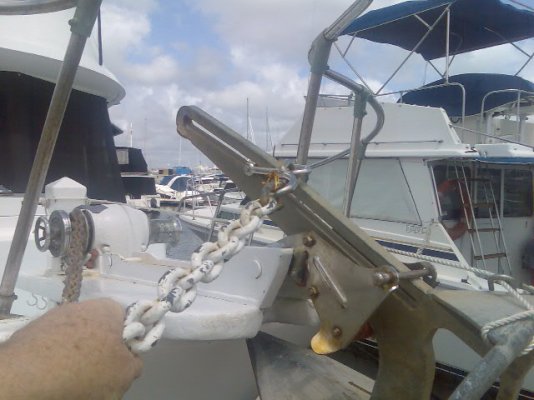Really interesting Steve. Just keep doin' what you're doin'. Can't wait for the open slot tests.
On the filming, how do you get the camera to point obligingly at the 'action' so much of the time? Do you have some kind of guidance system set up that gives you some directional control..? Is that what the extra lines are for we can see?
Also, coming back to the slot thing. I think one of the major differences between the way the Sarca slot works and the Manson, hinges on the closer tolerances in the relationship between the shackle bolt length and the shank width and slot dimension. I believe the secret is that being a more 'snug' fit, any tension in a sideways direction, i.e. other than from directly in line, will see the shackle in effect, 'jam' in the slot, and not move towards the fluke end of the slot, even with the bolt out, because of the relatively snug fit and the friction produced with off-line tension. In fact, from memory, I think that was Rex's explanation as to why a stainless shackle must be used up until about a #7 size anchor, or the friction between a galv'd shackle and the galv'd slot might make it too hard to trip it.
However, while that's the theory, (and note I'm being deliberately 'courageous' in a sort of 'yes minister' way before you do the test, so the colours are already nailed to the mast before the event), to reflect the confidence I have in them.
It's easy to say, "well, we told you so" after you've been proven right, isn't it. Of course I risk copping some egg on the old face here, but hey, I can stand it. I love eggs.
I am dying to see if it is actually what happens. One can reproduce the effect in the 'dry' situation out of the water, but in water is the only true test. I think I've got a pic of me demonstrating this 'slot jamming' feature on my older MacBook. Of course Marin rubbished it, said it was not realistic, which was probably fair comment, but for the record, I'll see if I can add it later…
Yes, here it is. In this pic I had picked up the slack chain, and then pulled it forwards at an angle of about 45º to the shank, trying to mimic what might happen in a current/wind reversal, and it slid to where it is, and then jammed. But Steve's in-water real life tests will tell the story better…I hope...







 :lol:
:lol: